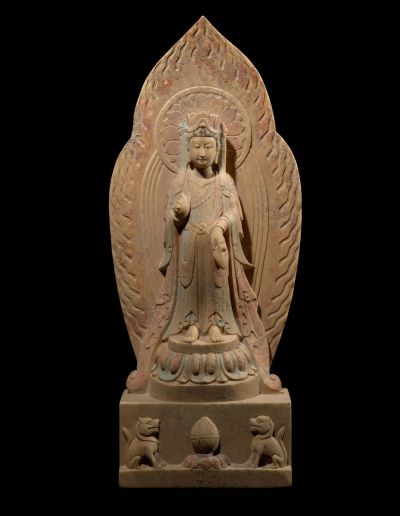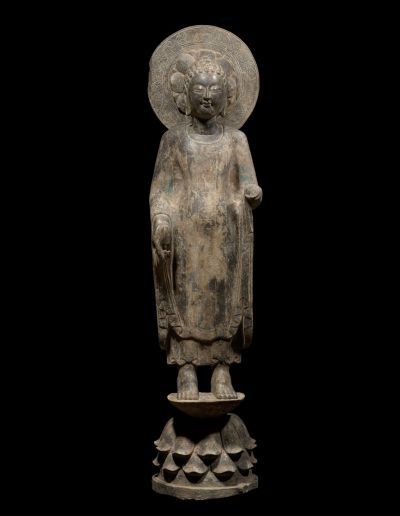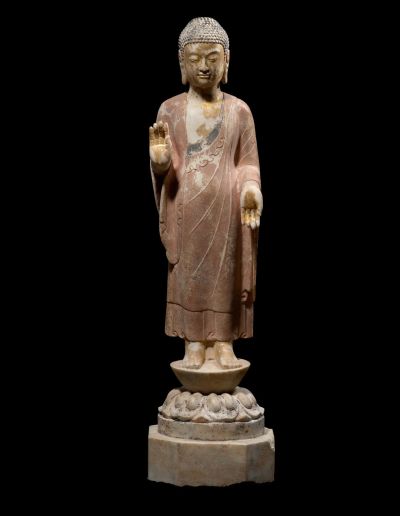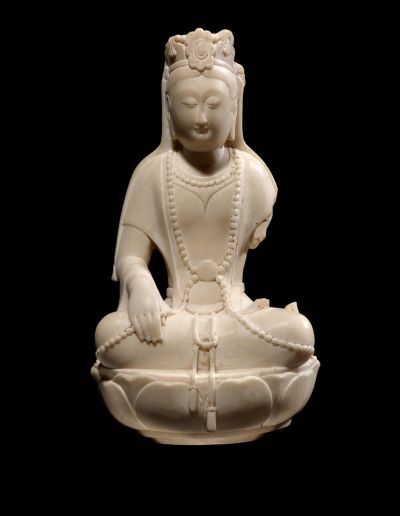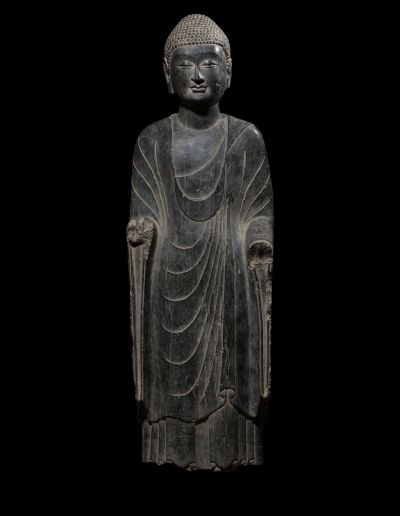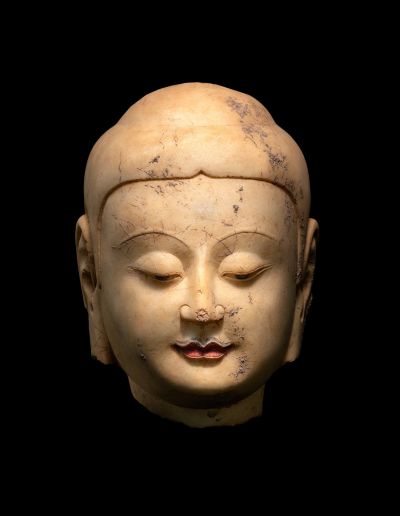TRANSCENDENCE
From Northern Wei to Tang
Buddhist Sculpture from the Fifth-Ninth Century
March 5 – April 18, 2020
Show Catalogue Available
Transcendence Exhibit Brochure
Complete with the artists works, and stock numbers when referencing for purchase.
Buddhism spread in the dynasties of Qi, Wei, and Tang, becoming, in effect, a state religion. There was a flourishing of temples, monasteries, and clergy, which, in turn, led to a tremendous production of sculpture for worship. Given the reverence for Buddhism, sculptures were carefully, even masterfully, carved and finely polished, and sometimes adorned with gilt or paint. Surviving sculptures, including those exhibited here, attest to the high artistic level of sculpture of this era. The works are truly beautiful, and, like all great art, they induce a quiet, soothing contemplation.
After the Tang dynasty, about 850 CE, Buddhism lost its status as a state religion and its influence began to wane, including as a spur to artistic achievement. There were “purges” in China, including during the Ming dynasty, and sculptures of the Buddha were removed from temples and other public spaces. Monks commonly buried the sculptures to prevent their destruction. The last purge was during the Cultural Revolution, and surviving images of the Buddha were again buried.
Some twenty years ago, during a visit to Hong Kong, I learned about Chinese Buddhist art. Many Buddhist sculptures had been unearthed and were being offered for sale. Frequently, they were remarkably well preserved, and, indeed, had acquired an appealing patina. Still, these sculptures were not favored at the time by Chinese collectors, surely because of the long hostility of the contemporary Chinese regime to religion. However, I found them extraordinary works of art and I purchased many of them, more than my colleagues thought prudent, but I could not help myself. I found them irresistible, and my admiration for them has endured. Appreciation for the sculptures has grown, and today examples of them are found in important museums, including the Metropolitan Museum of Art in New York, the Nelson-Atkins Museum in Kansas City, and the Freer and Sackler Galleries in Washington, DC.
This show is my fifth exhibit of Chinese Buddhist sculpture. I offered here at my gallery exhibits in 2007, 2009, 2014, and 2016, always accompanied by a lavishly illustrated catalogue. Each catalogue, too, offered essays by leading scholars of Chinese Buddhist art. This catalogue includes an erudite essay by Dr. Chang Qing.
Each sculpture was meticulously examined to ensure its authenticity, including by the staff of Orenda Laboratory. The Chinese government, after having long been indifferent to Buddhist imagery, prohibited in 2009 the export of early Chinese Buddha sculpture. All of the works exhibited here left China well before 2009. We are fortunate to be able to enjoy this abundance of beautiful imagery today through the survival of the sculptures on display. Our collective gratitude must be given to the unknown Buddhist monks who had the devotion, foresight, and courage to bury the works to prevent their mindless destruction.
Also presenting a special exhibition of photographic images by photographer and Fulbright Scholar Don Farber. After ten years of photographing Buddhist life in microcosm, mainly in one temple in Los Angeles, Farber set out to photograph Buddhist life with as wide a perspective as possible. He established the Dharma Heritage Project with the purpose of photographing and documenting Buddhist life internationally as it still exists and felt it would be a great addition to the sculpture on view.

